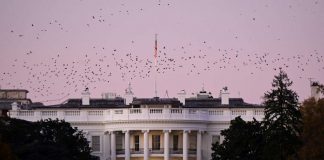JULY 6, 2020

Some European nations are closing in on a milestone that to the U.S. seems distant: virtually stopping the new coronavirus from spreading within their territories.
Echoing the achievement of Asia-Pacific countries such as New Zealand, Vietnam and Taiwan, a handful of places in Europe are reporting only a smattering of new daily infections. Their success in containing the pandemic has allowed them to reopen their economies earlier, at a faster clip and with greater confidence than the stop-start efforts of U.S. states and hard-hit neighbors such as the U.K.
Their experiences offer lessons at what public-health and disease experts say is a critical juncture in the pandemic, when the virus is still testing many countries even as their economies reopen, and the path to finally defeating it is uncertain.
Estonia has detected only 12 infections in the past two weeks; Iceland, 40. Norway has reported 187; Ireland 148. The latter two are comparable in population to South Carolina, which over the same period reported almost 17,000 new cases of coronavirus infection.
Aside from restrictions covering large gatherings, Estonia has now lifted almost all the measures it put in place to suppress transmission of the virus since declaring a nationwide emergency in early March, said Maris Jesse, Estonia’s deputy secretary-general for health. Estonians like to joke that, in common with their equally taciturn neighbors in Finland, they are looking forward to the day when they no longer need to observe a two-meter distance from each other in public places. “We can go back to our usual five meters,” she said.
The coronavirus pandemic triggered a range of public-health responses in countries across the world. At one end of the spectrum, Sweden chose to forego severe restrictions on public life and its economy and opt to let the virus spread through its population while shielding the most vulnerable groups.
At the other, New Zealand shut its borders and locked down tightly with the goal of stopping internal transmission of the pathogen altogether. Other countries have been somewhere in between, with big differences in the timing and severity of economically costly measures to slow the virus’s spread while scientists hunt for a vaccine.
The patchwork approach has meant big differences in rates of infection and death. World-wide, more than 11 million people have been infected and at least half a million deaths from Covid-19, the disease the new coronavirus causes, have been recorded, according to the World Health Organization.
Public-health experts and epidemiologists say the current stage of the pandemic is one of the trickiest to navigate. The virus in many places is in retreat but not defeated. Reopening shuttered economies too quickly risks giving it the chance to proliferate, while keeping them buttoned down whittles away jobs and income. A vaccine might be months away, or it might be years.
Governments are in a bind: Move toward a more open society and hope to stay on top of new flare-ups? Or keep the pressure up to push case numbers as close to zero as possible?
For some public-health experts, the question is a no-brainer. “The human toll is too great. The countries that can and have the capacity and the resources should eliminate it,” said Devi Sridhar, professor of global public health at the University of Edinburgh in Scotland, who advocates countries maintain social-distancing and other restrictions until internal transmission of the virus is effectively halted.
Countries can then switch their focus to screening travelers and quarantining them if necessary to ensure incomers don’t seed new outbreaks, she said. That is a better strategy economically than easing restrictions too soon because, as some U.S. states have already discovered, an uptick in cases might lead to lockdowns being reimposed, she said.
In Asia, Taiwan has reported just three cases in the past two weeks, all incomers from overseas. Vietnam’s government says it hasn’t had a case of local transmission for 78 days straight.
A zero-transmission strategy isn’t foolproof: New Zealand declared the virus eliminated within its territory as early as May but has since had new cases carried in by returning citizens, prompting the government to tighten quarantine measures. Australia had appeared close to shutting down internal transmission but has since seen cases flare in Melbourne, its second most-populous city.
Keith Neal, emeritus professor of epidemiology at the University of Nottingham in England, said eliminating local transmission and imposing onerous border controls are feasible options for small countries but less so for large ones, especially those like the U.S. and major countries in Western Europe that share land borders with others.
Rigorous testing and tracing the contacts of infected people alongside local lockdowns are the “only realistic options” for controlling the virus in the short term, he said.
Estonia and Norway have close ties to neighbors in Northern Europe that make intrusive screening and quarantine measures impractical, officials from both countries say. Instead, having brought infection numbers to a low level, the two countries are now deploying sophisticated test, trace and isolate programs to find new cases before they can spread the virus.
“Estonia is a small country and our economy relies on being open to our neighbors, to our export partners,” said Ms. Jesse. “Our strategy is to live with Covid and to contain it.”
Norway decided early on in the pandemic to ditch the textbook advice to “flatten the curve”—to spread infections out to prevent health services being overwhelmed—and opted instead for strict regulations upfront to squeeze transmission in the first place, said Norwegian Health Minister Bent Høie.
“Our goal is to find and identify small waves locally and hit them down before they get to be regional or national waves,” he said.
Courtesy/Source: The Wall Street Journal

































































































